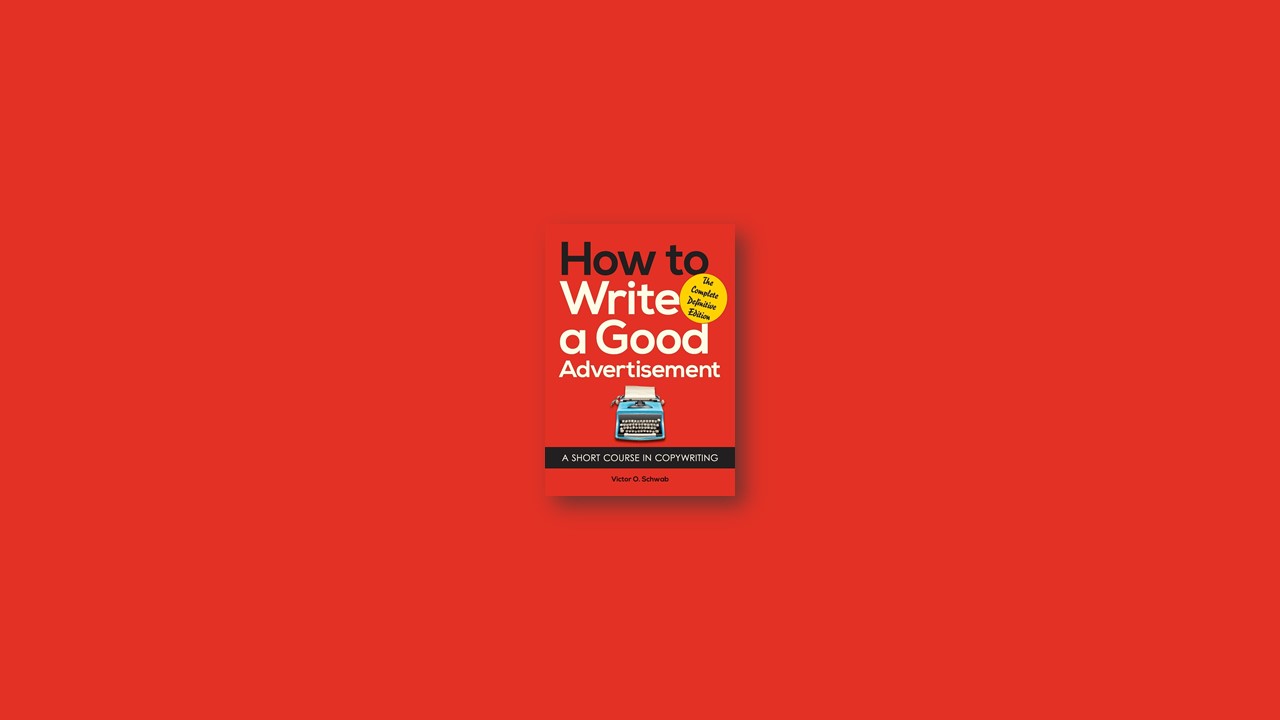There are five fundamentals in the writing of a good advertisement:
- Get Attention
- Show People an Advantage
- Prove It
- Persuade People to Grasp This Advantage
- Ask for Action
Two Ways to Do It
To get attention with your layout you may do either one of two things:
- Make it so powerful, so unusual, or so dynamically dominating that it captures the eye despite the competition of other advertisements less unique or less positive in their impact.
- Or you may make your layout so uncommonly simple, sedate, or “nonprofessional” that its very restraint captures attention.
For example, over a hundred years ago, at London’s most fashionable ball, gentlemen were strutting in the most ornate of all the frills and finery in their entire wardrobes. Beau Brummel had not as yet made his entrance. And everyone wondered how that incomparable dandy could possibly “steal this show.”
Suddenly he appeared. Instantly his figure dominated the whole ballroom. Yet he had merely gone back to simplicity. He was clad in a plainly designed costume of black and white.
Of course, either the first or the second type of layout is an extreme; but the more “neutral” your layout, the more likely it is to be passed by.
Now, in an effort to get attention with your layout don’t try to do it through perfect symmetry and balance.
To get and to hold attention a layout should have two qualities. First, it should be interesting to look at. Second, it should not be static, but should convey the feeling of movement and action, for these are interesting. As the late Professor George Burton Hotchkiss said, “One of the strongest incentives to attention is movement.”
Remember, the principal purpose of a layout is not to win admiration for its own aesthetic beauty but to help to get and hold attention—and thus help your copy win the chance to do a selling job. If it can do that it’s beautiful enough for any advertiser!
SHOW PEOPLE AN ADVANTAGE
This brings us to the writing of the body-copy matter itself. And Walter Weir certainly got to the heart of it when he said, “Advertising begins and ends with copy—begins with good copy, ends with bad.”
The thing people want to know above everything else is: What will your product DO for me? To make your copy hold the attention which your layout and headline have already won, show people an advantage—and keep showing them.
What Do People Want?
How can you tie up the particular advantages of your product with the personal desires of the greatest number of your readers? This list of strong and specific advertising appeals will help to guide you:
BETTER HEALTH—Greater strength, vigor, endurance. The possibility of longer life.
MORE COMFORT—Ease. Luxury. Self-Indulgences. Convenience.
MORE MONEY—for spending, saving, or giving to others.
MORE LEISURE—for travel, hobbies, rest, play, self-development, etc.
GREATER POPULARITY—through a more attractive personality or through personal accomplishments.
PRIDE OF ACCOMPLISHMENT—Overcoming obstacles and competition. Desire to “do things well.”
IMPROVED APPEARANCE—Beauty. Style. Better Physical Build. Cleanliness.
BUSINESS ADVANCEMENT—Better job. Success. “Be your own boss.” Reward for merit.
SECURITY IN OLD AGE—Independence. Provision for age or adversity.
SOCIAL ADVANCEMENT—Moving in better circles. Social acceptance. “Keeping up with the Joneses.”
PRAISE FROM OTHERS—for one’s intelligence, judgment, knowledge, appearance, generosity, or other evidences of superiority.
INCREASED ENJOYMENT—from entertainment, food, drink, and other physical contacts.
Summing it all up in another convenient form we may (since it is so important) do it in this way:
People Want to GAIN…(1) Health (2) Time (3) Money (4) Popularity (5) Improved appearance (6) Security in old age (7) Praise from others (8) Comfort (9) Leisure (10) Pride of accomplishment (11) Advancement: business, social (12) Increased enjoyment (13) Self-confidence (14) Personal prestige.
They want to BE…(1) Good parents (2) Sociable, hospitable (3) Up-to-date (4) Creative (5) Proud of their possessions (6) Influential over others (7) Gregarious (8) Efficient (9) “First” in things (10) Recognized as authorities.
They want to DO…(1) Express their personalities (2) Resist domination by others (3) Satisfy their curiosity (4) Emulate the admirable (5) Appreciate beauty (6) Acquire or collect things (7) Win others’ affection (8) Improve themselves generally.
They want to SAVE…(1) Time (2) Money (3) Work (4) Discomfort (5) Worry (6) Doubts (7) Risks (8) Personal embarrassment.
If you will tie up the advantages of your product with what people want to gain, be, do, and save, you will make them want to buy.
PROVE IT
The body of a sale comprises both flesh and bone, the flesh of an emotional response and the hard bone of fact to support it.
Now, although Prove It is the third of our five fundamentals, it of course does not mean that “proof material” must be presented in this same sequence in the actual preparation of an advertisement.
So “proof material” may be used throughout the whole advertisement. It may even be used as headline and display material, particularly when it has dramatic attention-getting value or when it, in itself, demonstrates what the product will do for people.
Why You Need Facts and Where
Here are two of the reasons why it is so necessary to work plenty of “prove it” facts into your advertisement—and to review your copy thoroughly to make sure that you have done so:
First, for the very general reason that people probably discount all advertising claims just as seriously these days as they ever did before. Far too many of them wonder whether the philosophy of advertisers is not similar to that of Mark Twain’s Puddinhead Wilson, who said: “Tell the truth or trump—but get the trick.” In fact, one of Daniel Starch’s investigations indicated that almost 80 per cent of those who read 342 of the advertisements of leading national advertisers questioned the veracity of these advertisements. The more facts you present, the more credible your advertisement, and everything in it, will become.
Second, and more specifically: People need facts and want facts as reasons and excuses for buying—in order to justify to themselves (and to others) a decision which may be based on their emotions alone.
This is a very important point. So perhaps it might be well to emphasize it by quoting a statement by Clyde Bedell from How to Write Advertising That Sells:
“The head certainly can’t go along and concur with the heart without some reasons. Now all this process is one of rationalization. To rationalize is to bring props of reason to support decisions arrived at emotionally. The skilled copy writer attempts to provide the reader of advertising with a basis for rationalization. In short, the real advertising writer who is after results makes the reader want something—and then provides what the reader will consider a good excuse for buying it.”
The Missing Ingredient in Many an Otherwise Good Advertisement
- Use statements that also ring true.
- People are satiated with claims of perfection.
- To make your facts more convincing, make them specific.
- The use of actual photographs, rather than drawings, increases credibility.
- Get more “why” into it. Believability is increased if stark claims are substantiated by clear, reasonable, and logical copy about why the promise can be performed.
PERSUADE PEOPLE TO GRASP THIS ADVANTAGE
You have gained attention with your headline and layout. (Fundamental No. 1.) You have held interest by showing advantages. (Fundamental No. 2.) You have proved that your product can deliver these advantages. (Fundamental No. 3.) You will soon Ask for Action (Fundamental No. 5.)
So now (Fundamental No. 4) you motivate these benefits even more definitely than you may already have done earlier in the advertisement. You put wheels under them. You picture the benefits in actual motion in the daily lives of the people reading your copy. You sum up your Sales story. You paint a quick and summarized mind’s-eye portrait of what the product will do for your reader, and how easy it is for him to get it.
This clincher copy may, in a shorter advertisement, represent only one or two sentences. In longer copy it may represent several paragraphs. But in either case it is a final setting of the stage preparatory to asking for some specific action on the part of the reader. It gathers up various threads of claims and proof; weaves them into a strong close. It reiterates. It reminds. It sums up.
A Simple Illustration of It in Action
Suppose you are writing a piece of copy about a suit of clothes for a man. Your copy may first have pointed out how well your reader will look in it, how well it will fit him, why its quality represents a wise purchase. In other words, you have shown him certain advantages and you have proved them.
Now, to go further in persuading him to grasp these advantages, you may stress the benefits of the product in use. You may close by explaining that this is the kind of suit which assures him of the well-groomed appearance indicative of success, so necessary to those desirous of business or social advancement
ASK FOR ACTION
Now, to get action you’ve got to ask for it. Perhaps you remember the story about Henry Ford, Sr., talking with an old crony who suddenly asked him, “Henry, why don’t you ever buy any bolts from me?” “Heck, Joe,” Mr. Ford replied, “you never asked me!”
Many advertisements fail to do just that. They end without even trying to get the reader to translate into some sort of action the interest, the desire, and the conviction which the advertisement itself has created. All the hard-won ground already gained in the advance toward a sale is allowed to be dissipated by natural human inertia. Such advertisements do nothing whatever to convince the reader that this is a better time than any other to take some action about actually getting what he has just been made to want.
If a salesman neglects to make a good close he can make another call. But a “poor-closing” or a “non-closing” advertisement makes an ineffective visit to every one of its prospects. It neglects, on every single visit that it makes, to go the full possible distance toward getting the business.
What Kind of Action Shall We Ask For?
What kind of action are we going to ask for? Of course, it depends on the product or proposition you are selling, but I think we may divide the forms of “asking for action” into three principal categories.
The first form is the very common “Go to Your Dealer” type. This is usually used on impulse items, products of food, drink, and other inexpensive products in everyday use; but it is also often the complete, the only, and the final “close” depended upon to put over the sale of an expensive product.
The second form does not necessarily ask the reader that an inquiry be made direct to the advertiser nor does it offer him anything for an inquiry at the dealer’s. But it does suggest to the reader something to do which will establish a closer bond between himself and the advertiser or his product. It gives the reader some interesting action to carry out which will make him more friendly to the advertiser’s product.
The third common form of “asking for action” copy is that pulling for a direct response from readers: for inquiries for a free booklet, a sample of the product, a recipe book, a free trial offer, for an entry in a contest, for a miniature model, or some gadget, novelty, or game tying up in some way with the product itself.
Guarantees Get Action
Now, no matter what form of action you ask your reader to take, make this action as simple and easy and specific as you can.
Ask yourself: “What do I want people to do when they finish reading my copy? How, where, and when do I want them to do it?


